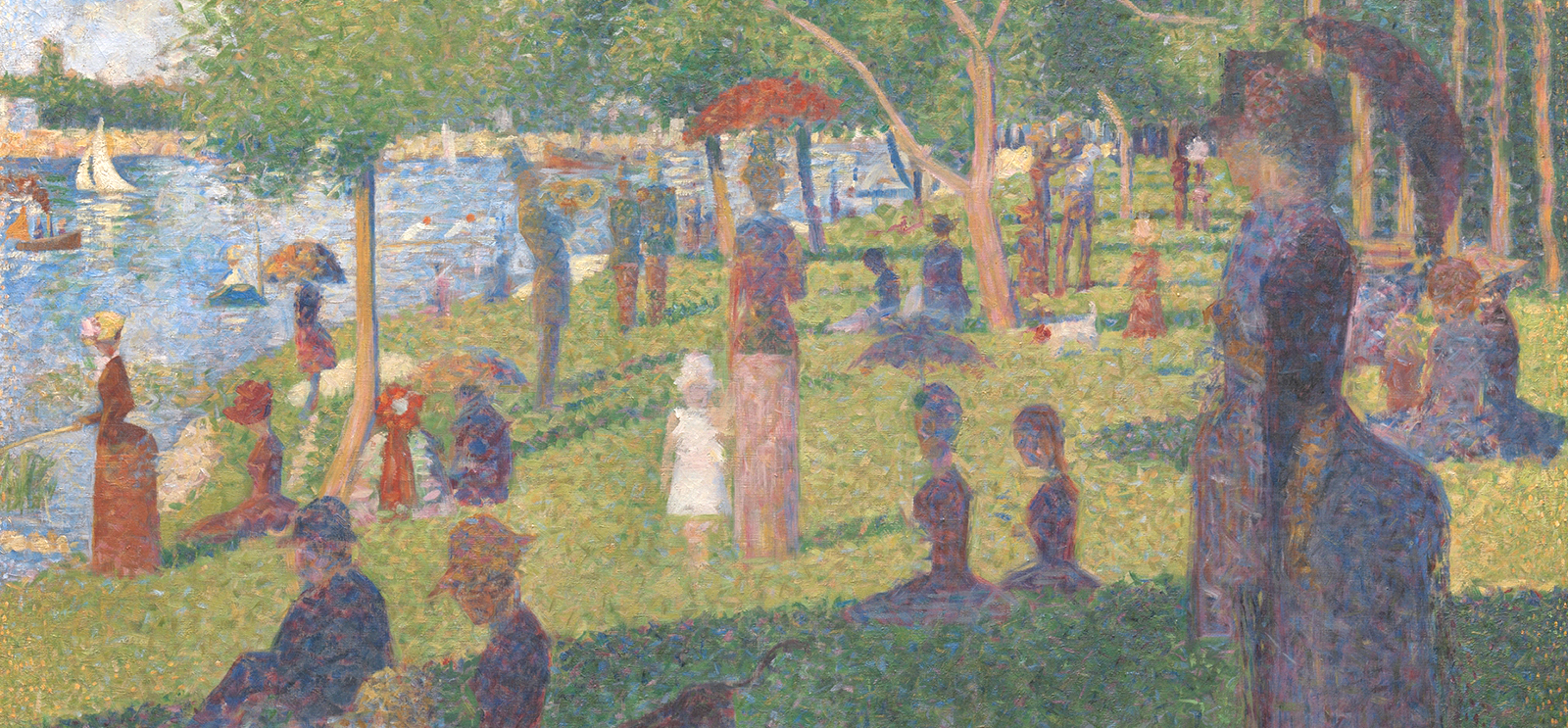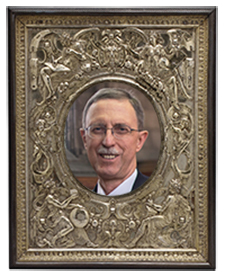
Art lovers can now access—and download for unrestricted use—over 375,000 pieces from the Metropolitan Museum of Art, including postimpressionist painter George Seurat’s last study (pictured above) for his masterpiece in pointillism, A Sunday Afternoon on the Island of La Grande Jatte (1884). Seurat’s finished painting is part of the Art Institute of Chicago’s permanent collection. Like the Met, the Art Institute is also making efforts to widen access to its collections. Last year Claire and Glenn Swogger, AB’54, made a gift to the Art Institute of Chicago that allows the museum to offer free admission every day to Chicago children under age 18. (Study for A Sunday on La Grande Jatte, Georges Seurat, 1884. CC0 1.0)
The Metropolitan Museum of Art just made 375,000 images from its collection available for free download. We went hunting for pieces with a UChicago connection.
 Have you ever wanted to use Photoshop to see what a portrait of dean of the College John W. Boyer, AM’69, PhD’75, might look like in a gilded silver Viennese frame made during the Habsburg empire? Your job just got a lot easier thanks to the Metropolitan Museum of Art.
Have you ever wanted to use Photoshop to see what a portrait of dean of the College John W. Boyer, AM’69, PhD’75, might look like in a gilded silver Viennese frame made during the Habsburg empire? Your job just got a lot easier thanks to the Metropolitan Museum of Art.
The Met is sharing more than 375,000 public-domain artworks from its collection online in high-resolution format for reuse—without any permission or fee—however you see fit. The new open access digital initiative was announced earlier this month.
The Met joined with several partners—such as GitHub, Wikimedia, and Pinterest—to meet art fans where they already are online, ensuring that this collection is easy to use and accessible to as many people as possible. “Pinterest is where more than 150 million people discover ideas for their lives, whether they collect images of artistic masterpieces or the art of the everyday,” Pinterest cofounder and chief creative officer Evan Sharp, AB’05, said in a press release. “We’re honored to partner with the Met to make this unprecedented collection accessible.”
[[{"type":"media","view_mode":"media_original","fid":"3890","attributes":{"alt":"","class":"media-image","height":"311","typeof":"foaf:Image","width":"500"}}]]
The enormous collection can be overwhelming, but the Met offers categories to make browsing easier. When you browse, be sure to mark the check box labeled “public domain artworks” in the left navigation to pull up only the reusable and Photoshop-able imagery.
From this public domain grouping, we’ve curated some of our favorite examples of the Met’s collection with UChicago connections. In addition to pieces with connections to the Oriental Institute, the University of Chicago Press, and the Smart Museum of Art, we spotted several works featured in alumni PhD dissertations. Take a look at them below.

[[{"type":"media","view_mode":"media_original","fid":"3891","attributes":{"alt":"","class":"media-image","height":"432","typeof":"foaf:Image","width":"500"}}]] (Dog Guarding Dead Game, Jean-Baptiste Oudry, 1753. CC0 1.0)
Hal N. Opperman, AM’63, PhD’72, discussed the rococo painting Dog Guarding Dead Game multiple times in his dissertation, “Jean-Baptiste Oudry.” This work was exhibited at Oudry’s last salon in 1753, along with his painting Ducks Resting in Sunshine, which is also available for reuse.
[[{"type":"media","view_mode":"media_original","fid":"3892","attributes":{"alt":"","class":"media-image","height":"551","typeof":"foaf:Image","width":"500"}}]] (Dempsey Through the Ropes, George Bellows, 1923. CC0 1.0)
Frank Sieberling, PhD’48, wrote about many works by American realist painter George Bellows—including his drawing Dempsey Through the Ropes for his finished painting Dempsey and Firpo—in his dissertation, “George Bellows, 1882-1925, His Life and Development as an Artist.” The famous fight depicted in the drawing and painting was parodied during a 1996 episode of The Simpsons.
[[{"type":"media","view_mode":"media_original","fid":"3893","attributes":{"alt":"","class":"media-image","height":"354","typeof":"foaf:Image","width":"500"}}]] (Sunflowers, Vincent van Gogh, 1887. CC0 1.0)
Naomi Esther Margolis Maurer, PhD’85, reflected on Sunflowers in her dissertation, “The Pursuit of Spiritual Knowledge: The Philosophical Meaning and Origins of Symbolist Theory and Its Expression in Thought and Art of Odilon Redon, Vincent van Gogh, and Paul Gauguin.” This is one of four paintings that make up van Gogh’s Paris Sunflowers series.
[[{"type":"media","view_mode":"media_original","fid":"3894","attributes":{"alt":"","class":"media-image","height":"576","typeof":"foaf:Image","width":"500"}}]] (The Crucifixion, Master of the Codex of Saint George, ca. 1330–35. CC0 1.0)
John Howett, AM’62, PhD’68, referenced The Crucifixion in his dissertation, “The Master of the St. George Codex.” The Met’s collection also includes one of this piece’s companion panels, The Lamentation. Both are currently on view at the Met Cloisters in Gallery 14.
